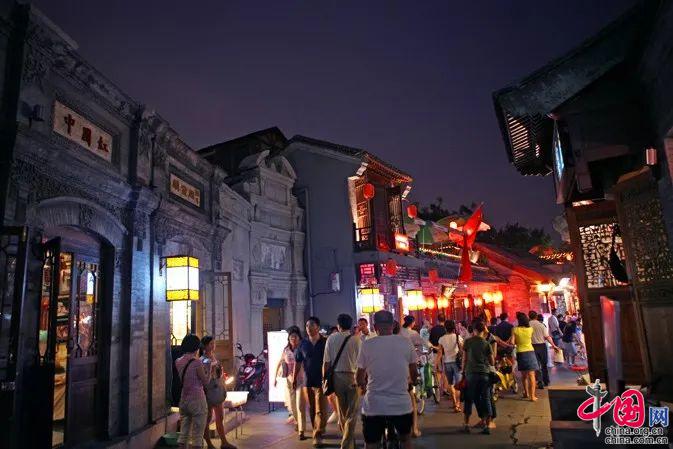京城探馆 | 晨钟暮鼓:生生不息的生活赞歌
京城探馆 | 晨钟暮鼓:生生不息的生活赞歌
Exploring Beijing | Morning Bell and Evening Drum: Ode to Daily Life

钟鼓楼
Bell and Drum Towers
中国古时击钟报晨、击鼓报暮
故有“晨钟暮鼓”之习俗
In ancient China, people rang bells in the morning and beat drums in the evening to announce the time.
北京的鼓楼与钟楼是元、明、清三代都城的计时、报时中心。因其建筑依声学原理而造,故钟鼓楼的报时传声功能十分强大。
The Bell and Drum Towers of Beijing served as the facilities to announce the time in the capital city of the Yuan (1271-1368), Ming (1368-1644), and Qing (1644-1911) dynasties. Both of them were built in light of acoustic theories, so they could generate loud sounds.
钟楼
Bell Tower
天明击鼓催人起
Ringing the bell to wake people up

钟楼是在元大都大天寿万宁寺的中心阁旧址上建成的,始建于元至元九年(1272年),重建于明永乐十八年(1420年),后毁于火。又于清乾隆十年(1745年)再重建,并存于今。
The Bell Tower was first built on the site of the Central Pavilion in the Datianshou Wanning Temple in Dadu, capital of the Yuan Dynasty, in 1272, the ninth year of the Zhiyuan reign. It was reconstructed in 1420, the 18th year of the Yongle reign during the Ming Dynasty. Later, the tower was burned down and rebuilt in 1745, the 10th year during the reign of Emperor Qianlong of the Qing Dynasty. It has since stood there to this day.


钟楼通体高近48米,为无梁式砖石结构建筑,下承高大的砖石基座。基座四面各开拱券,内部呈十字券结构,利于聚音。基座之上有汉白玉须弥座,四周围以汉白玉护栏。
The tower is nearly 48 meters tall and features a beamless brick-and-stone structure and a huge base. The base is carved with arched niches on all sides. Inside, the tower has a cross-shaped dome that is suitable to focus sound. Its marble Buddhist-style bottom above the base is surrounded by marble balustrades.



须弥座上为楼身建筑,重檐歇山顶,四面开拱券,中央是一口重达63吨的永乐大钟,用于明、清两代报时之用。
The tower above the bottom is a structure with a double-eave, hip-and-gable roof. There are open arches on the four sides. In the middle is the Yongle Bell that weighs 63 tons, which was used to announce the time during the Ming and Qing dynasties.
鼓楼
Drum Tower
入夜鸣钟催人息
Beating the drum to announce the arrival of night


鼓楼始建于元至元九年(1272年),原为元大都的齐政楼,后数度毁于火。鼓楼重建于明永乐十八年(1420年),后又毁于火。其三度重建于明嘉靖十八年(1539年),经过历代修缮,留存至今。
The Drum Tower was built in 1272, the ninth year of the Zhiyuan reign, during the Yuan Dynasty. It was initially called the Qizheng Tower in Dadu, and later destroyed in fires several times. It was rebuilt in 1420, the 18th year of the Yongle reign during the Ming Dynasty, before it was burned down again. It was reconstructed three times in 1539, the 18th year of the Jiajing reign in the Ming Dynasty. Afterwards, it was renovated several times until it became what it looks like today.


鼓楼通高近47米,是京城体量最大的砖木建筑之一。鼓楼下承坡道形砖石台基,面阔五间,为三重檐歇山式建筑。
The tower, with a height of nearly 47 meters, is one of the largest ancient brick-and-wooden structures in Beijing. At the bottom of the tower is a sloped base made of brick and stone. The entire building is five rooms wide and features a tri-eave, hip-and-gable roof.

其外观为三层,内实为二层,内部存放着报时更鼓,其中主鼓1面,群鼓24面,代表着1年与24节气。
Viewed from outside, the tower appears to have three stories, but in fact there are only two stories. Inside the tower are drums used to announce the time, including one main drum and 24 auxiliary drums, which represent one year and the 24 solar terms, respectively.
烟袋斜街
Yandai Xiejie
北京古老的商业街
An old commercial street in Beijing

在钟鼓楼四周的一片平民区中,烟袋斜街有着独特的地理位置。
Surrounded by traditional residences near the Bell and Drum Towers, Yandai Xiejie enjoys a unique location.

因连接着钟鼓楼与什刹海两个区域,自元代漕运码头在斜街一端设立,这里便成为人头涌动的商贾云集之地。
The street connects the Bell and Drum Towers to Shichahai Lake. In the Yuan Dynasty, a wharf was built on one end of the street, making it a commercial area packed with merchants and shoppers.


斜街两侧商铺鳞次栉比,生意兴隆。明代随着水运萎缩,这里渐渐成为陆路商人的居住之处。
清代随着钟鼓楼商业区的再度繁荣,什刹海也成为王公贵族的休闲好去处,烟袋斜街一度成为了典型的专为官宦服务的街区。
然随着辛亥革命的到来,这里再度变脸成了贵族们变卖古玩字画的场所,并有着”小琉璃厂“的称号,成为平民的淘宝的乐园。
In the past, the street was lined with countless shops bustling with customers. With the decline of water transportation in the Ming Dynasty, the street gradually turned into a residential area for merchants.
During the Qing Dynasty, with the revival of the commercial area around the Bell and Drum Towers, the Shichahai Lake area became an ideal recreational destination for nobles and aristocrats. Meanwhile, Yandai Xiejie turned into a neighborhood particularly serving eunuchs.
After the Revolution of 1911, the area became a venue for aristocrats to sell antiques and artworks. Nicknamed “Lesser Liulichang”, it transformed into a paradise for ordinary people to buy treasures.

南锣鼓巷
Nanluoguxiang
老北京胡同里的古韵漫心
An old lane full of Beijing flavor


南锣鼓巷北起鼓楼大街,南至平安大街。元大都时建成,是北京最古老的街区。已有740多年历史。
Nanluoguxiang is an alley extending from Gulou Street in the north to Ping’an Street in the south. Dating back to the Yuan Dynasty, the 740-year-old alley is one of the oldest streets in Beijing.


南锣鼓巷是我国唯一完整保存着元代胡同院落肌理、规模最大、品级最高、资源最丰富的棋盘式传统民居区,也是最赋有老北京风情的街巷。
Nanluoguxiang boasts China’s only chessboard-style traditional residential area that well preserves the appearance of Yuan Dynasty lanes. It is also largest and highest-leveled of its kind, with the richest tourism resources, which make it the lane with the strongest flavor of old Beijing.
北京的钟楼鼓,这高耸于中轴线北端的高大皇家建筑,不仅附和着昔日文武百官上朝的脚步,更印在了平民百姓的日常劳作生活里,成为了一个时代的标志。正如烟袋斜街上空准时飘荡起的声响,“百年鼎鼎世共悲,晨钟暮鼓无时休”。
As grand imperial buildings on the north end of Beijing’s central axis, the Bell and Drum Towers not only witnessed the paces of officials and generals going to court, but also became an integral part of daily life for ordinary people. They have become icons of the times. Over centuries, the sounds of morning bell and evening drum have consistently reverberated above Yandai Xiejie.

